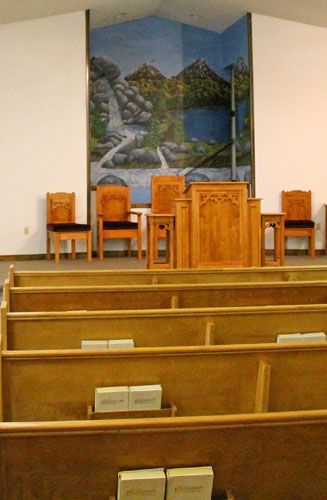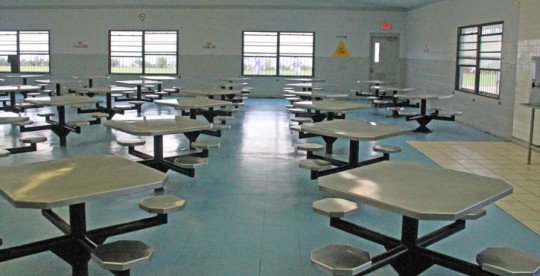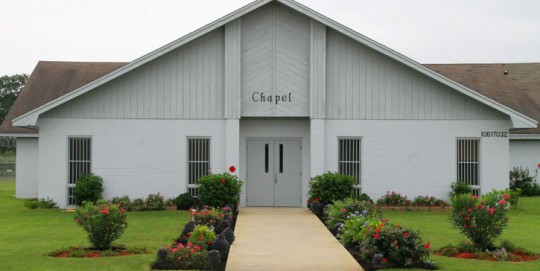Part 3: Inside Century Correctional – Food For The Body, Food For The Soul
July 17, 2013
Today, we continue our look inside the Century Correctional Institution with a look at food for the body and food for the soul. Our series will continue inside the medical unit, the prison’s most secure housing unit and more.
How about fresh summer tomato salad? Or a watermelon bowl with fresh cantaloupe? Or fresh from the field sweet corn or summer squash? Those are just a few of the items on recent menus at Century Correctional Institution.
Those fresh items are served to inmates for one simple reason — cost. The fresh fruits and vegetables are grown by prisoners at CCI, at the Berrydale Forestry Camp and at the University of Florida IFAS facility in Santa Rosa County. And they grow a lot. Already this year, CCI inmates have consumed 12,000 tons of corn.
 Fresh inmate-produced produce keeps the cost per inmate down to about $1.45 per day. The food service department works twos shifts per day, providing over 4,000 trays per day. Almost all inmate food is baked or boiled — no frying.
Fresh inmate-produced produce keeps the cost per inmate down to about $1.45 per day. The food service department works twos shifts per day, providing over 4,000 trays per day. Almost all inmate food is baked or boiled — no frying.
The food service facility is a point of pride at Century Correctional.
The facility serves 1,400 inmates in about an hour and a half, including service for medical special diet prisoners at the beginning or end of a food shift. The noise at a meal is best described as a low murmur — inmates are allowed only to talk to one of the three others at their table. There’s no conversation or food sharing with neighboring tables.
Expectations of a cool, comfortable dining experience are out the window during the summer — there’s no air conditioning.
(story continues below)
 The chapel is as nondescript as the other buildings in the compound. Unlike most churches when viewed from the outside, there’s nothing ornate and no religious symbols. Just a simple “Chapel” over the door and the number “10617032″ in one corner — the state’s building number.
The chapel is as nondescript as the other buildings in the compound. Unlike most churches when viewed from the outside, there’s nothing ornate and no religious symbols. Just a simple “Chapel” over the door and the number “10617032″ in one corner — the state’s building number.
The inside of the chapel appears a lot like any small country church — wooden pews, a mural of a river flowing from down from the hills. But still very little in the way of religious symbols — one simple cross on a table, no Star of David, no Menorah. That’s because the State of Florida recognizes over 100 different religions, any one of which can be practiced in the chapel. Christian, Jewish and Islamic services are common in the non-denominational chapel.
There’s a small room for a fellowship hall or meetings with a small kitchen. It’s used by faith based groups that may serve coffee or light food, or for the preparation of foods called for in specific religious practices.
Anywhere from 90 to 250 volunteers may enter the institution to help provide services on a monthly basis. During a one year period ending in April 2013, there were 5,170 total hours accrued by volunteers and a total of 1,390 program offered in the chapel for the inmate population.
Our series “Inside Century Correctional Institution” continues on NorthEscambia.com.
NorthEscambia.com photos, click to enlarge.
Comments
3 Responses to “Part 3: Inside Century Correctional – Food For The Body, Food For The Soul”






@David Huie Green. “Corn is cheap when you grow it yourself “.
And plentiful as well.
corn is cheap when you grow it yourself
The prisoners seem to have a nice food service/dining facility and a generous ration of corn.